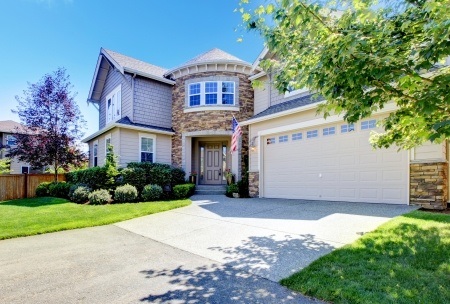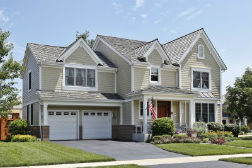 Home prices increased in November, with national home prices up 0.70 percent month-to-month and 6.20 percent higher year-over year. Case-Shiller’s 20-City Home Price Index rose by 0.70 percent in the three-month period ending in November; nationally, home prices grew 6.20 percent year-over-year.
Home prices increased in November, with national home prices up 0.70 percent month-to-month and 6.20 percent higher year-over year. Case-Shiller’s 20-City Home Price Index rose by 0.70 percent in the three-month period ending in November; nationally, home prices grew 6.20 percent year-over-year.
Seattle, Washington held first place in home price growth with a year-over-year increase of 12.70 percent. Las Vegas, Nevada home prices followed with year-over-year home price growth of 10.60 percent. San Francisco, California home prices grew by 9.10 percent year-over-year. Slim supplies of homes for sale drove rising home prices and sidelined would-be borrowers as affordability remained out of reach.
Home Prices Get a Pre-Recession Do-Over in Some Cities
David M. Blitzer, Chairman of the S&P Dow Jones Indices Committee, said that Los Angeles and San Diego, California along with Las Vegas, Nevada and Miami, Florida are repeating fast-paced price gains that they had prior to the recession.
Mortgage Rates, Building Costs Impact Supply of Homes and Affordability
Combined effects of high mortgage rates and rapidly rising home prices could dampen buyer enthusiasm over time, but the time-worn proclamation that what goes up must come down has not applied to home prices in high demand metro areas. Home buyers may rush to close their home loans before rates rise, but more buyers may delay buying a home due to few options, higher home prices and rising rates.
Lower taxes and rising wages may encourage renters to buy homes, but home prices continued to outstrip income for many potential buyers.
Building more homes is the only relief in sight for low inventories of homes for sale, but builders face rising materials costs, shortages of lots suitable for building and insufficient workers. Other factors impacting home building and buying homes include poor weather in some areas during December, and further shortages of homes caused by natural disasters in 2017.
2018 may see high-priced local areas develop affordable homeownership programs as current prices continue to rise above interested buyers’ financial resources.

 Home prices continued to rise in September according to Case-Shiller National and 20-City home price index reports. According to the National Home Price Index, national home prices rose 0.70 percent month for the three months ending in September. The National Index regained its pre-housing bubble peak and surpassed it by 5.90 percent as of September.
Home prices continued to rise in September according to Case-Shiller National and 20-City home price index reports. According to the National Home Price Index, national home prices rose 0.70 percent month for the three months ending in September. The National Index regained its pre-housing bubble peak and surpassed it by 5.90 percent as of September. Home builder confidence in housing market conditions surged in August after sagging to an eight-month low in July. The National Association of Home Builders reported a July reading of 68 in August after analysts expected a one- point increase from July’s Housing Market Index reading of 64. Any reading over 50 indicates that more builders consider housing market conditions positive than those who do not.
Home builder confidence in housing market conditions surged in August after sagging to an eight-month low in July. The National Association of Home Builders reported a July reading of 68 in August after analysts expected a one- point increase from July’s Housing Market Index reading of 64. Any reading over 50 indicates that more builders consider housing market conditions positive than those who do not. According to the National Association of Home Builders, July builder sentiment dipped to an index reading of 64 as compared to June’s revised reading of 66, the original reading was 67. Analysts expected the reading for July to increase to 68. Builders cited increasing lumber prices as a concern affecting builders’ outlook on housing market conditions for new single-family homes. Any reading over 50 for the NAHB Housing Market Index indicates that more builders than fewer are positive about housing market conditions, but July’s reading was the lowest in eight months. NAHB said that home builder confidence in market condition “remains strong.”
According to the National Association of Home Builders, July builder sentiment dipped to an index reading of 64 as compared to June’s revised reading of 66, the original reading was 67. Analysts expected the reading for July to increase to 68. Builders cited increasing lumber prices as a concern affecting builders’ outlook on housing market conditions for new single-family homes. Any reading over 50 for the NAHB Housing Market Index indicates that more builders than fewer are positive about housing market conditions, but July’s reading was the lowest in eight months. NAHB said that home builder confidence in market condition “remains strong.” According to the Case-Shiller National Home Price Index, February home prices grew at their fastest pace in three years. While home prices have steadily grown in recent months, growth rates slowed in many areas month-to-month; the escalation of home prices from January to February indicates stronger housing markets. National home prices increased by 0.20 percent in February to a seasonally-adjusted annual rate of 5.80 percent appreciation.
According to the Case-Shiller National Home Price Index, February home prices grew at their fastest pace in three years. While home prices have steadily grown in recent months, growth rates slowed in many areas month-to-month; the escalation of home prices from January to February indicates stronger housing markets. National home prices increased by 0.20 percent in February to a seasonally-adjusted annual rate of 5.80 percent appreciation.